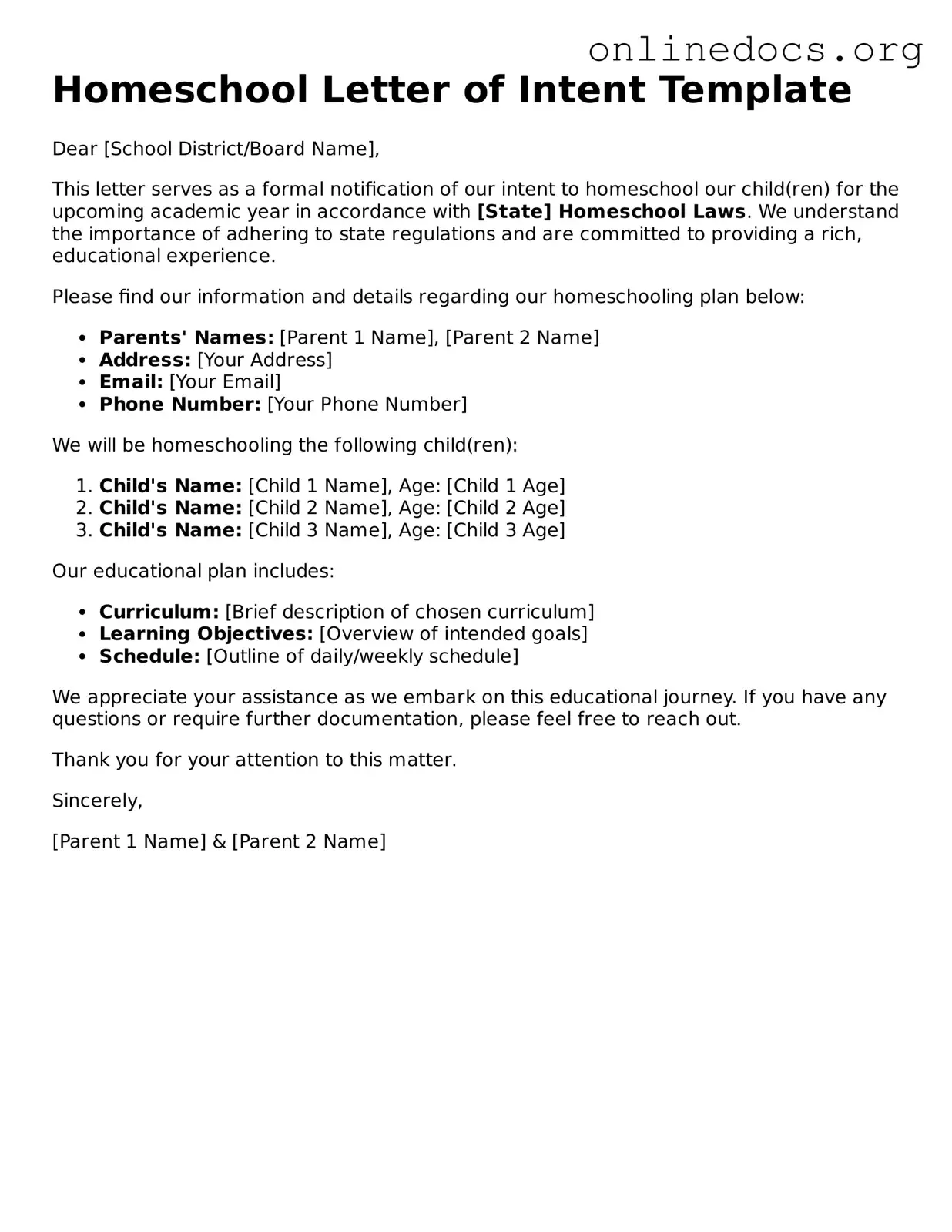The Homeschool Letter of Intent is akin to the Enrollment Form used by traditional schools. Both documents serve as official notifications of a student's educational status. Parents fill out these forms to inform the school or educational authority of their intent to enroll their child, whether in a public school or a homeschool program. Each form requires basic information about the student and the educational setting, ensuring that the appropriate records are maintained for educational oversight.
Another similar document is the Affidavit of Homeschooling. This legal declaration is often required in states with stricter homeschooling laws. Like the Letter of Intent, it informs local authorities of a family's choice to educate their child at home. The affidavit typically includes details about the curriculum and educational philosophy, reinforcing the commitment to providing a quality education outside the traditional school system.
The Individualized Education Plan (IEP) shares some similarities with the Homeschool Letter of Intent, especially for families of children with special needs. An IEP outlines specific educational goals and the resources required to meet those goals. While the Letter of Intent states a family's intention to homeschool, the IEP provides a roadmap for how the child's unique needs will be addressed within that educational framework.
For those engaging in vehicle transactions, understanding the process surrounding the sale is crucial; verifying the documentation, particularly the important Motor Vehicle Bill of Sale requirements, can provide clarity and assurance throughout this important process.
The Private School Affidavit is another document that parallels the Homeschool Letter of Intent. This form is used when parents choose to enroll their child in a private institution. Both documents require parents to declare their educational choice and often necessitate similar information about the student. They serve to inform the state of the educational arrangement while ensuring compliance with relevant laws.
The Notice of Intent to Homeschool is closely related to the Homeschool Letter of Intent. This document is often required by state laws and serves as a formal declaration of a family's intention to homeschool. It typically includes details about the educational approach and the curriculum that will be used, similar to the information that might be included in a Letter of Intent.
The Curriculum Plan is another document that aligns with the Homeschool Letter of Intent. While the Letter of Intent announces the intention to homeschool, the Curriculum Plan provides a detailed outline of the subjects and educational materials that will be used throughout the school year. This document can be essential for meeting state requirements and ensuring that a comprehensive education is provided.
Finally, the Withdrawal Form from a public school is similar in that it officially notifies the school of a student's change in educational status. When parents decide to homeschool, they often need to submit this form to formally withdraw their child from the public school system. This process ensures that the school updates its records and that the student is no longer counted as part of the public school enrollment.
